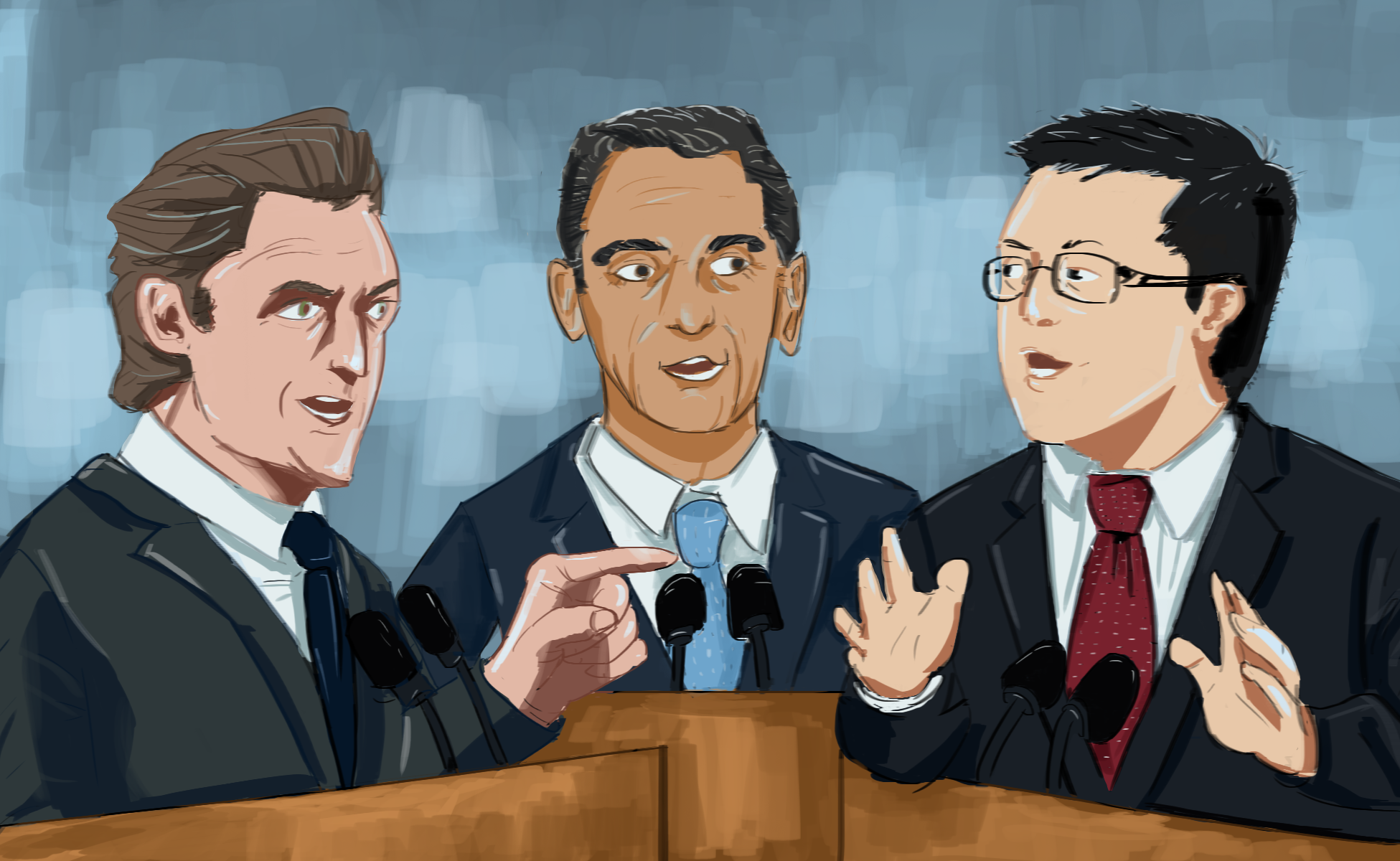Keshav Tadimeti: Gubernatorial candidates need to better address UC funding this election

(Thomas Tran/Daily Bruin)
By Keshav Tadimeti
Jan. 25, 2018 8:48 p.m.
If you aren’t graduating by the end of this year, you’d better hold on tight; California’s next governor has close to no idea how to play ball with the University of California.
Californians will be able to choose the state’s next governor come November. Among the top-polling candidates are Lt. Gov. Gavin Newsom, former Los Angeles Mayor Antonio Villaraigosa and State Treasurer John Chiang. The candidate stage also features a Republican state assemblyman, a small-business owner and a former state school’s chief.
While voters still have nine months before the gubernatorial election, and five before the primary, the political fervor is already ramping up. The six major candidates took to the stage two weeks ago in their first televised gubernatorial debate together, and their campaigns have upped the ante on their political jabs at each other. Everything from candidates’ stances on a single-payer state health care system, charter schools versus public schools and even how willing candidates are to work with the White House is fair game for scrutiny.
But one topic has been largely missing from the conversation: higher education. More specifically, funding it.
Candidates only mentioned the topic in passing at the gubernatorial debate, and the most substantive discussion on the matter has been little more than lamentation about the lack of affordability of state universities.
But students don’t need politicians’ pity over the sky-high costs of a college education – we already know very well what the price tag of attending a state university is. The conversation surrounding higher education needs to be more than just idyllic words of a bygone era when California’s universities were affordable. The current governor has shown us just how hard it is to secure stable funding for the UC while grappling with the state’s limited finances, and it’s incumbent upon the next governor to broker deals with UC President Janet Napolitano and lawmakers to save the University’s quality of education.
For almost the entirety of Gov. Jerry Brown’s term, the UC has been subjected to reduced state funding and a series of legislative coercions from Capitol Hill. These have included having to enroll 10,000 more in-state students in light of an audit revealing discrepancies between resident and nonresident admissions criteria, and the Board of Regents having to pass an arbitrary nonresident enrollment cap. These are understandable measures from a legislative standpoint: The UC has a bloating administration with a history of flamboyant salaries, and the state’s finite funds shouldn’t be exhausted on them while tuition continues to rise.
But the UC’s financial situation isn’t as black and white as Sacramento likes to paint it. Drastic state funding cuts during the 2008 recession forced the UC to enroll more nonresident students, who pay supplemental tuition costs that help subsidize resident students’ tuition prices. The state’s mandates only strain the cash-starved University, and students have been caught in the crossfires, be it through growing class sizes or more thinly spread university services.
These are concerns California’s next governor needs to be cognizant of when handling the state’s budget. But that might be wishful thinking at this point.
Villaraigosa, one of the Democratic front-runners for the gubernatorial race, has focused his platform on affordability of education for marginalized communities and people of color, but hasn’t extended the conversation much beyond primary education – except, of course, to say the obvious fact that college in California is expensive.
Chiang has expressed similar ideas, though his campaign page has little to add save for how he thinks the state should invest in higher education.
The only candidate who appears to have a semblance of a plan is Newsom, though his idea seems to just be strong-arming the state government to give more funding to state universities – a questionable strategy, given the Legislature’s reluctance to open up its purse in the past. Nathan Click, a spokesperson for Newsom’s campaign, said the lieutenant governor is intent on addressing the lack of state funding for the UC and the corresponding issues of food insecurity in the university system, but could not provide specifics on how he planned to persuade lawmakers to cough up more money.
But the lieutenant governor does not always get the facts straight. Newsom, a UC regent, argued last year the UC shouldn’t have raised tuition because the UC Office of the President had $175 million in undisclosed fees, despite that money being used to provide financial aid to undocumented students and fund the University’s food security initiatives. And just this week, he said in a press release that the regents shouldn’t raise tuition because he thought it would give the state government reason to give less state funding to the University – a backwards assumption, given the UC wanted to raise tuition because of, not in spite of, insufficient state funding.
The fact that Newsom, the front-runner for the race who already interacts with state universities, doesn’t understand the intricacies of the UC’s finances shows just how lacking the gubernatorial election run is in specifics about funding higher education.
Of course, it might seem like state university funding isn’t as pressing as, say, infrastructure development or California’s underfunded high schools. But an investment in higher education has long-term ramifications for the state: It affects the livelihoods of generations of Californians, and decides the skills and versatility of the state’s economy.
Brown couldn’t come up with a long-term solution for addressing underfunded universities within the last decade. Legislators couldn’t do that either. But the next governor will have to. And that means details for how to fund higher education need to start showing up at press conferences, debates and the statistics-laden cheat sheets that campaign managers have their candidates memorize.
Otherwise, the next governor’s term isn’t going to look any different than the previous governor’s to students, despite how much candidates claim it will.

